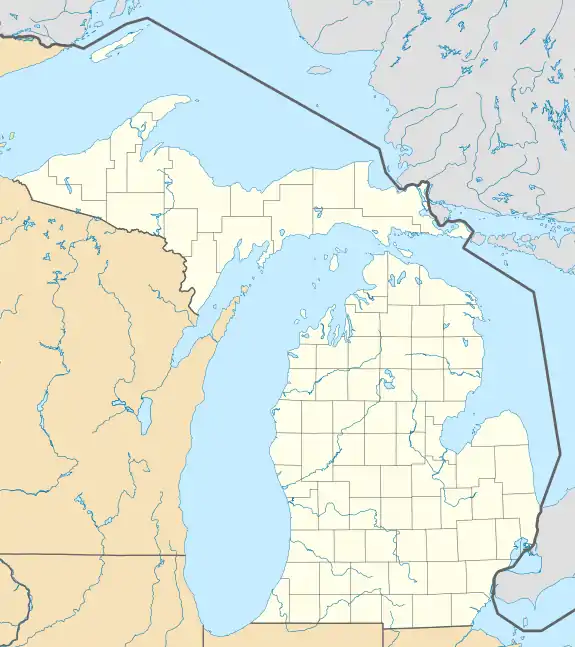Clark-Stringham Site | |
  | |
| Location | Address Restricted, near Jackson, Michigan[lower-alpha 1] |
|---|---|
| Coordinates | 43°21′30″N 84°24′30″W / 43.3583°N 84.4083°W |
| Area | 5 acres (2.0 ha) |
| NRHP reference No. | 73002154[2] |
| Added to NRHP | June 19, 1973 |
The Clark–Stringham site, designated 20-JA-37, is an archaeological site located near Jackson, Michigan. It was listed on the National Register of Historic Places in 1973.[2]
History
The Clark–Stringham site was likely used over a period of time dating from the late Archaic through the early, middle, and late Woodland periods. The main time period of occupation was the later Woodland. Evidence suggests that the location was the site of a seasonal camp, rather than a permanent village.[3]
The site was re-discovered in 1968 by a team of students from Michigan State University headed by Charles E. Leland.[1] Leland did some initial excavation, removing some artifacts. Further investigation was undertaken by John Wilson on 1970.[4] In 1973, a second team from MSU, headed by Joseph L. Chartkoff, recovered a number of artifacts from the site, dating from the late Archaic and early Woodland periods.[1]
Description
The Clark–Stringham site is located along the Grand River, on property owned in 1973 by Rachel Clark and A.R. Stringham.[1] The site is heavily wooded,[5] and stretches for about 0.7 kilometers along the bank of the river.[3]
Notes
References
- 1 2 3 4 Wyatt, Ken (July 23, 2011). "Peek Through Time: Researcher has found thousands of American Indian artifacts in Jackson County". Jackson Citizen Patriot.
- 1 2 "National Register Information System". National Register of Historic Places. National Park Service. November 2, 2013.
- 1 2 "Current Research". American Antiquity. 39 (4): 621–642. 1974. doi:10.1017/S0002731600091125. JSTOR 278914.
- ↑ Rives Historical Society (1979). The Cornerstone Township: A Pictorial History of Rives Township, Jackson County, Michigan. Rives Historical Society. p. 27.
- ↑ Chartkoff, Joseph L. (1978). "Transect interval sampling in forests". American Antiquity. 43 (1): 46–53. doi:10.2307/279630. JSTOR 279630.

